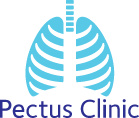Reviews [verified written recommendation]

Pectus Implant after previous Nuss Surgery for pectus excavatum
April 2018
Aaron, 31 year old was not completely happy with the final pectus excavatum result after a Nuss operation but thought further revision surgery too risky to consider.
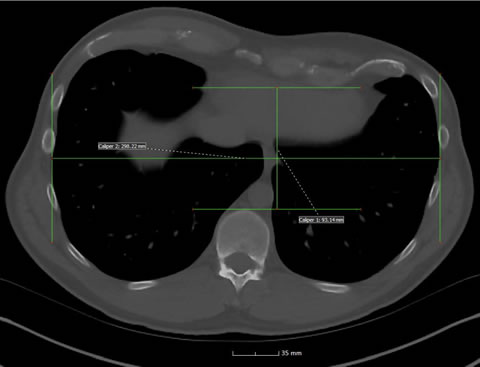 Chest CT showing calculated Haller index of 3.2 (H=L2/L1=298/93) with a moderate residual pectus excavatum but quite a distorted and asymmetric-looking chest wall following Nuss surgery
Chest CT showing calculated Haller index of 3.2 (H=L2/L1=298/93) with a moderate residual pectus excavatum but quite a distorted and asymmetric-looking chest wall following Nuss surgery
I first noticed my pectus excavatum at an early age, maybe around 10 years old. Since then I grew more body conscious and shy, particularly about taking my shirt off in public. This had been the case right through my teenage years. Even wearing t-shirts I felt my pectus was visible. This played on my mind all of the time. I often wore more layers in the summer than was comfortable. I would avoid anything where I felt I would have to take off my t-shirt, such as swimming. In my later teen years I worked out at home to help disguise my pectus, spending more time concentrating on chest exercises to build up my pectoral muscles. This helped with how my chest looked in a t-shirt but the deformity still remained. Alongside my pectus I had rib flare which seems a common trait with pectus excavatum from the research I endlessly did during my later teen years. Working out helped me to put on weight which I struggled to do when I was at school as I played a lot of sport in my early teens. Once I put on weight through lifting weights and eating more it helped to disguise the rib flare a little. However my pectus still remained.
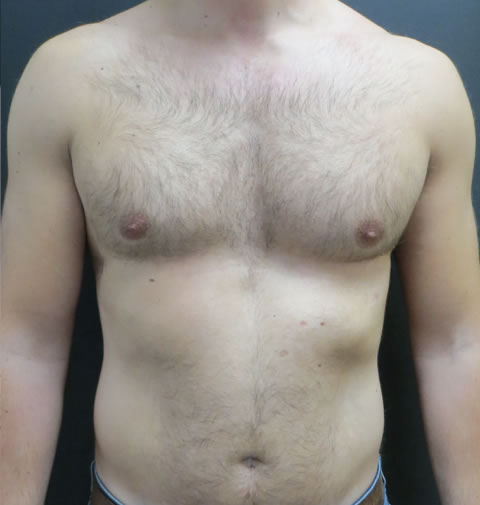
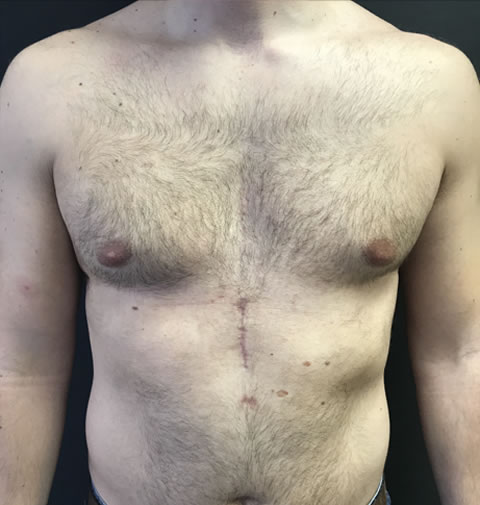
Before (left) and 10 weeks following non-corrective surgery with a pectus implant (right)
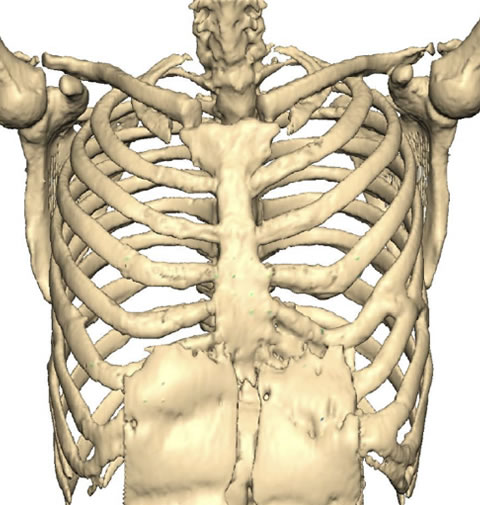 Bone reconstruction
Bone reconstruction
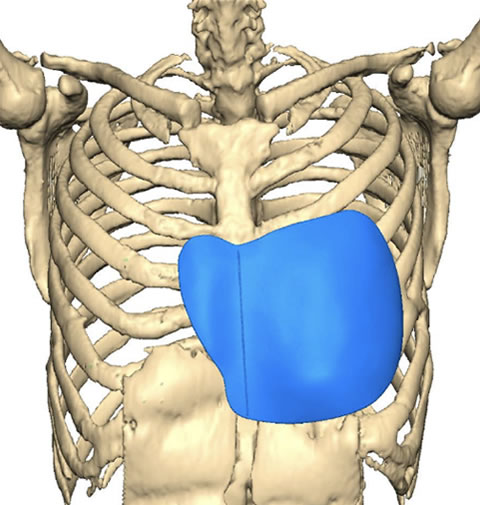 Bone reconstruction with implant
Bone reconstruction with implant
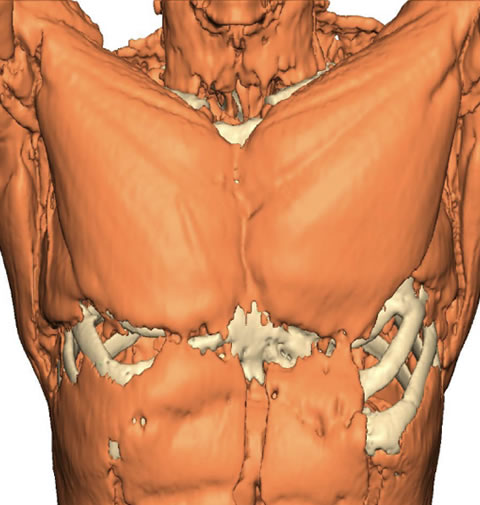 Bone & muscle reconstruction
Bone & muscle reconstruction
 Bone & muscle reconstruction with implant
Bone & muscle reconstruction with implant
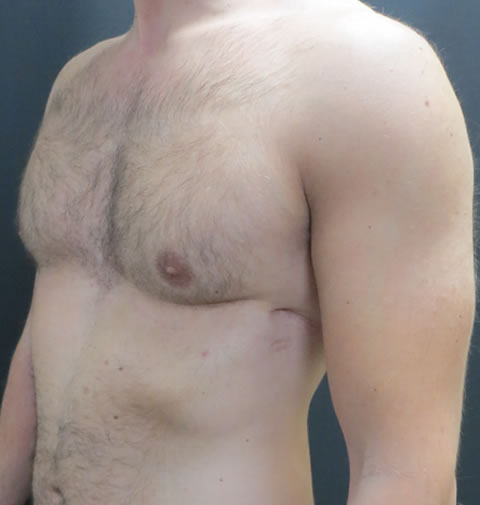 Before surgery with a pectus implant
Before surgery with a pectus implant
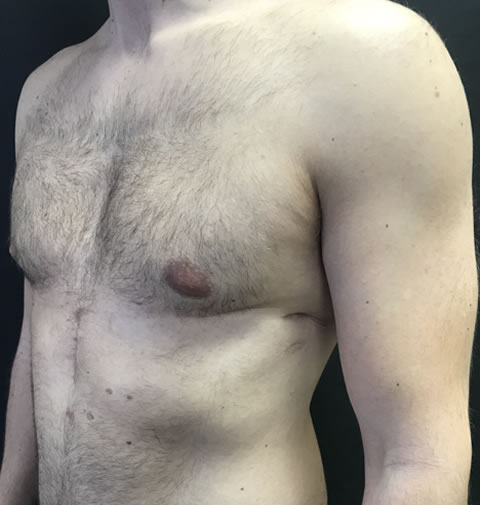 10 weeks following non-corrective surgery with a pectus implant
10 weeks following non-corrective surgery with a pectus implant
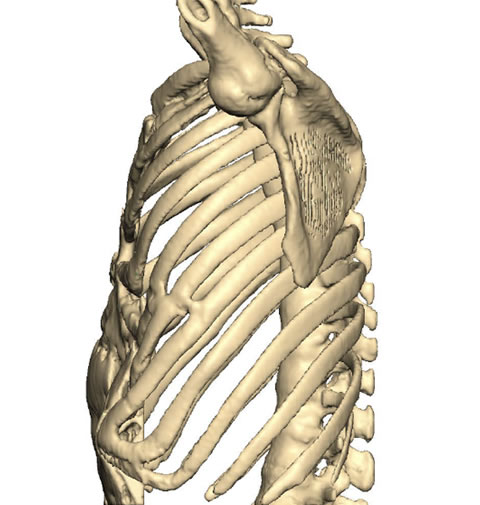 Bone reconstruction
Bone reconstruction
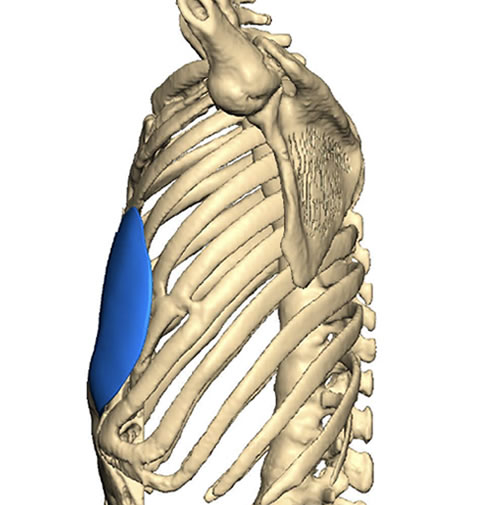 Bone reconstruction with implant
Bone reconstruction with implant
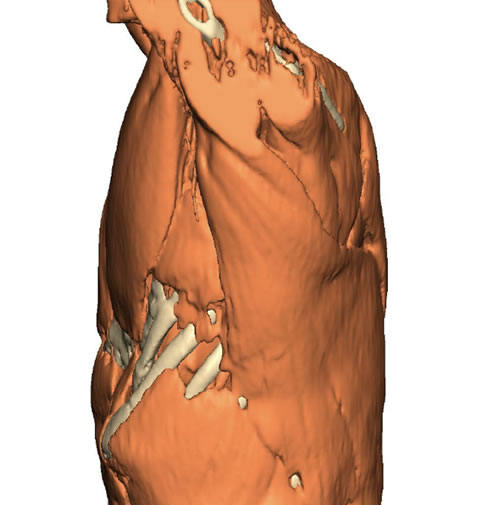 Bone & muscle reconstruction
Bone & muscle reconstruction
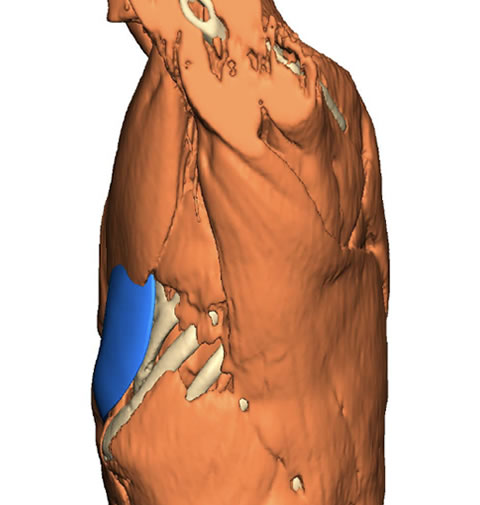 Bone & muscle reconstruction with implant
Bone & muscle reconstruction with implant
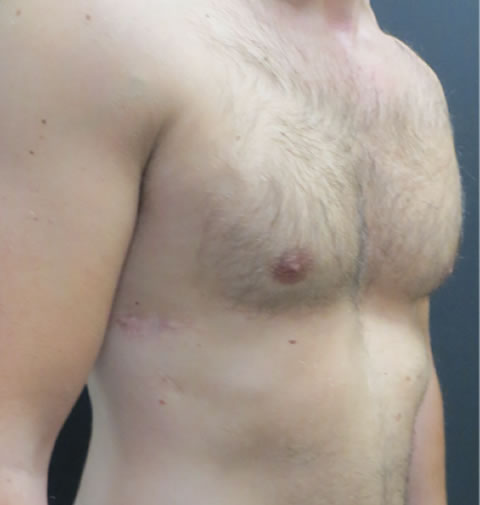
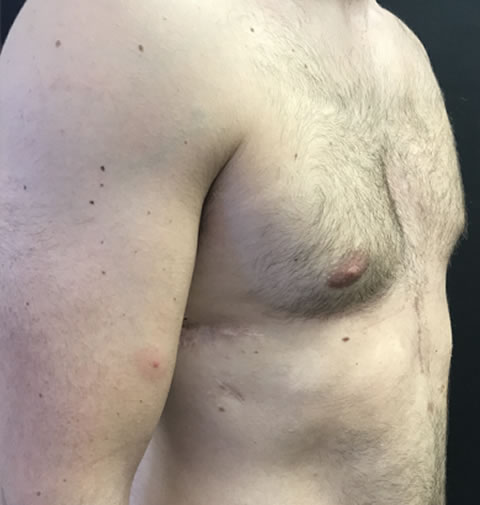
Before (left) and 4 weeks following non-corrective surgery with pectus implant (right)
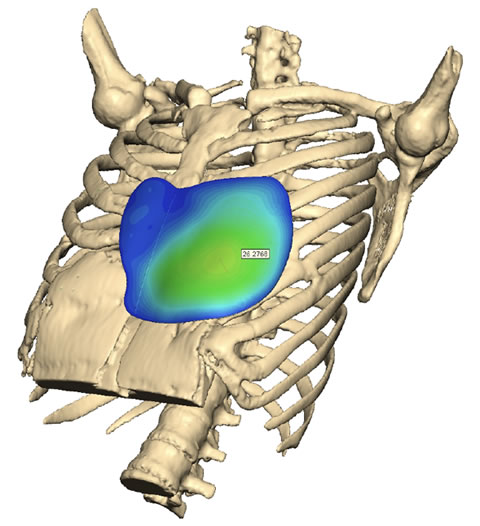
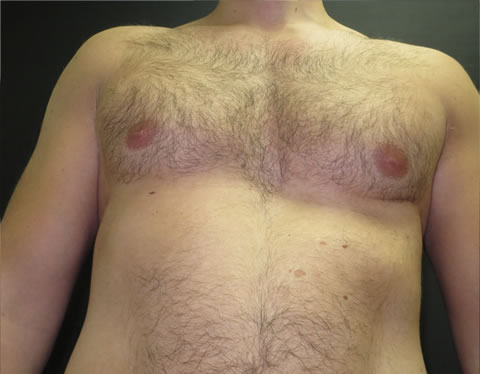
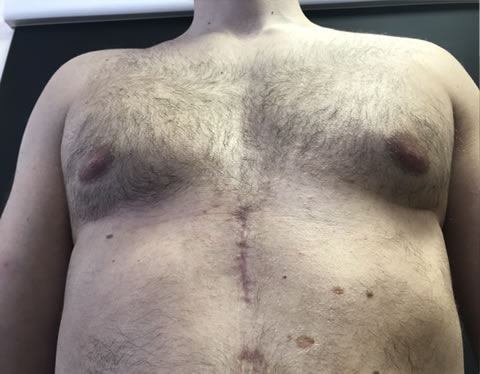
Before (left) and 4 weeks following non-corrective surgery with pectus implant (right)
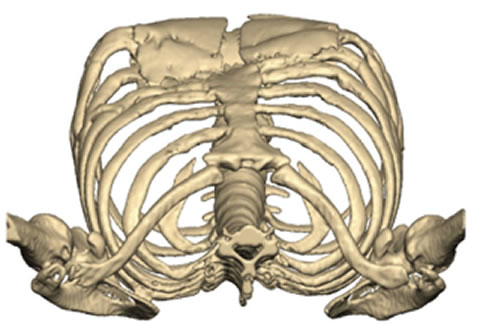 Bone reconstruction
Bone reconstruction
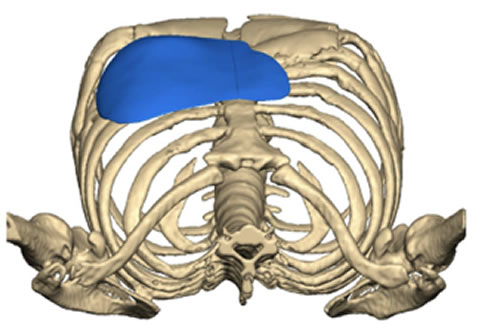 Bone reconstruction with implant
Bone reconstruction with implant
In my late teens I began looking into operations to correct this. I came across two different options at my local hospital. Firstly was the Ravitch procedure. This had been around for several years at the time and had more information about it. Secondly was the Nuss procedure. Of the two options I was keener on the Nuss procedure. My reasons and thoughts on this were that the Ravitch seemed very invasive and consisted of quite a bit of cutting and reconstruction. The scarring from the incision did not necessarily bother me but was one of the negative aspects of this. The Nuss procedure was known as a minimally invasive surgery. Due to there being less cutting of cartilage and smaller incisions, and in my opinion at the time a more aesthetic result, I decided on the Nuss option. I had the Nuss operation when I was 20.
After recovering from the Nuss procedure I felt it had improved my pectus by approximately 40%. I was happy that there was an improvement, and did not regret having the operation as in my eyes any improvement was a bonus and was grateful for having it done on the NHS. I always had the understanding that it was a new operation at the time and the surgeons were still gaining experience. However in the back of my mind I knew my pectus issue still remained. I continued to do weight training to try and build more muscle around my chest. I was able to and allowed to do this with the Nuss bar in place as long as I was careful and did not push myself too hard. I was aware that the risk with the Nuss procedure was bar movement. My weight training once again improved the look of my chest but it could not fully disguise my pectus. Building my chest muscles continued to make me feel better, as when I wore t-shirts people would comment on how big my chest looked rather than anticipating them commenting on any deformity they may have noticed. I do feel weight training helped improve the look of my chest overall and also improved my self-esteem.
Over the last 2 or 3 years I felt more frustrated that my pectus was still bothering me. Despite my weight training and my previous Nuss operation, my pectus was still very noticeable. I would still hide away from showing my chest to people. I would never go swimming. Taking off my shirt in public was still very much a difficult thing to do. I began looking into having another Nuss or possible Ravitch procedure depending on what was available to me on the NHS or privately. I returned to my GP who referred me back to the hospital where I had my Nuss operation. However, in the meantime I continued to research pectus excavatum operations in the UK and the Pectus Clinic lead by Mr Hunt popped up. I read through the options he presented on the website, and there was extensive information regarding the Nuss procedure, Ravitch procedure, psychological support, bracing, and the implant procedure. I immediately began looking into his version of the implant procedure as I had seen previous versions which left an irregular aesthetic result. The version of the implant procedure he was providing seemed far more advanced with the edges being tapered and the implant being manufactured against a CT scan of your chest. I made an enquiry via the email address provided on his website.
I received a response to my email the following day from Mr Hunt’s secretary and everything sounded very promising. I requested an appointment. It was so very easy especially with email correspondence. As I am extremely private regarding my pectus I felt emailing was so much more convenient as I had many questions and it is often difficult to find a quiet place during working hours to phone. I understood that the Pectus Clinic had to be funded privately and was given the cost of the consultation up front. The only downside for me was the location as I am from the North East and the clinic is located south of London. Once I arrived for my consultation and spoke to Mr Hunt the distance was no longer an issue as I finally got to speak to someone who I felt knew exactly what my thoughts and feelings were and he analysed my chest the way I analysed it in my mind. This was extremely comforting. For the first time it felt like someone knew what my worries were and where I wanted to see improvement. He talked about how my pectus was asymmetrical, and how I had rib flare on one side. He spoke to me about not just the dip in my chest but why I had a dip and how the way my sternum was laying contributed to the asymmetry. Mr Hunt asked me what procedure I was interested in and gave me reasons for why the implant procedure was best for me. He talked through many things including operation length, implant manufacture, hospital stay, recovery and costs. Although a lot of this information is already on the Pectus Clinic website, Mr Hunt went through these things in much greater detail. What was not on the website at the time were many before and after photos which were provided by consent of the previous patients who had undergone the implant procedure. This was very interesting to see as all of the results were fantastic. The previous patients were all different builds and each one had a remarkable aesthetic result. This allowed me a greater idea of how my result may look. I came out of Mr Hunt’s clinic feeling extremely positive about the implant procedure and knew it was what I wanted. He offered his advice on what procedure he recommended for me but did not put any pressure on my decision.
Once I had confirmed via email with Tracey (Mr Hunt’s secretary) for the go ahead, Tracey organised my CT scan in a time suitable for me. As mentioned by Mr Hunt this scan is sent to Anatomik Modelling (the company who manufacture the implant). Soon after they provided Mr Hunt and then myself with computer images of how the implant will looked on my chest. I found this to be the most fascinating and exciting part of the process as the images are so clear and you can see how the result should appear from several different angles. At this point I had to give Mr Hunt the green light for them to manufacture the implant and also to take payment from myself for the procedure. A time was organised (minimum of 8 weeks for manufacture of implant). The next time I would see Mr Hunt would be the day of the operation.
During the run up to my operation Mr Hunt was in regular contact with me and was keen to try a different method of drainage as an improvement to the post-op care. Instead of weekly seroma drainage with a needle, he was keen to use a drain which would stay in for approximately 2 weeks. This improvement was encouraged by a colleague, a very experienced plastic surgeon called Mr Gateley who performs various implant operations and has used drains in his patients. I was happy with whichever decision Mr Hunt felt would be best.
After waking up from the operation I had very little pain. I did feel sore and a lot of tightness down the front of my chest due to the wound but nothing too uncomfortable. I also had the drain placed in me during the operation. This tube lies just under the skin next to the implant to drain the seroma into a reservoir. Mr Hunt came to see me and explained what he did, as well as putting my mind at ease about the soreness I was feeling as well as what I should expect during the next 24 hours and throughout the week. I experienced very little pain at all during my recovery. It was managed by oral pain relief and anti-inflammatory medication. I stayed in the hospital for one night and was discharged at midday the next day. I was instructed by Mr Hunt and my nurse Hollie, about the use and care of my drain. Hollie had previous experience of looking after patients who have undergone this operation, which was very comforting. I was also required to wear a compression garment to help minimise the swelling and seroma fluid build-up.
I returned to Mr Hunt’s clinic once a week for month and then once more at around the 3 month mark. My drain stayed in for 2 weeks. I was worried about having this drain on me all the time but after a short while I got used to having it and it helped remind me to take it easy during my recovery. I got my drain removed after 2 weeks and during the third week the seroma fluid began building under the skin in the centre of my chest. It is a strange feeling as my chest became quite boggy, but completely painless. On returning to the clinic at the end of the third week, Mr Hunt drained the fluid with a needle. Once again this is painless as the operation causes numbness to the middle of the chest. Mr Hunt had explained this would happen. I needed no further drainage after this.
I am approaching the 3 month mark since having my operation. I experience no pain. I have mild discomfort now and then if I stretch or lift something I shouldn’t. I have been back to the gym for 3 weeks now, but mainly doing cardio and very light weights. I felt no discomfort with running or other cardio based exercises. Mr Hunt instructed me if I wanted to that I could do light weight workouts but avoiding chest or shoulder exercises.
I am extremely pleased with my decision to have this operation. I love the way my chest looks now. The implant does not look noticeable at all. For the first time I feel like my chest looks normal. I can feel the implant is there but it does not bother me. It is not uncomfortable and the feeling of it being there is only slight. The scar is healing nicely, and is very tidy. I feel a lot more comfortable with my shirt off now, and the deformity is no longer visible. I could not recommend Mr Hunt and the Pectus Clinic more.
Aaron, North East, England.
